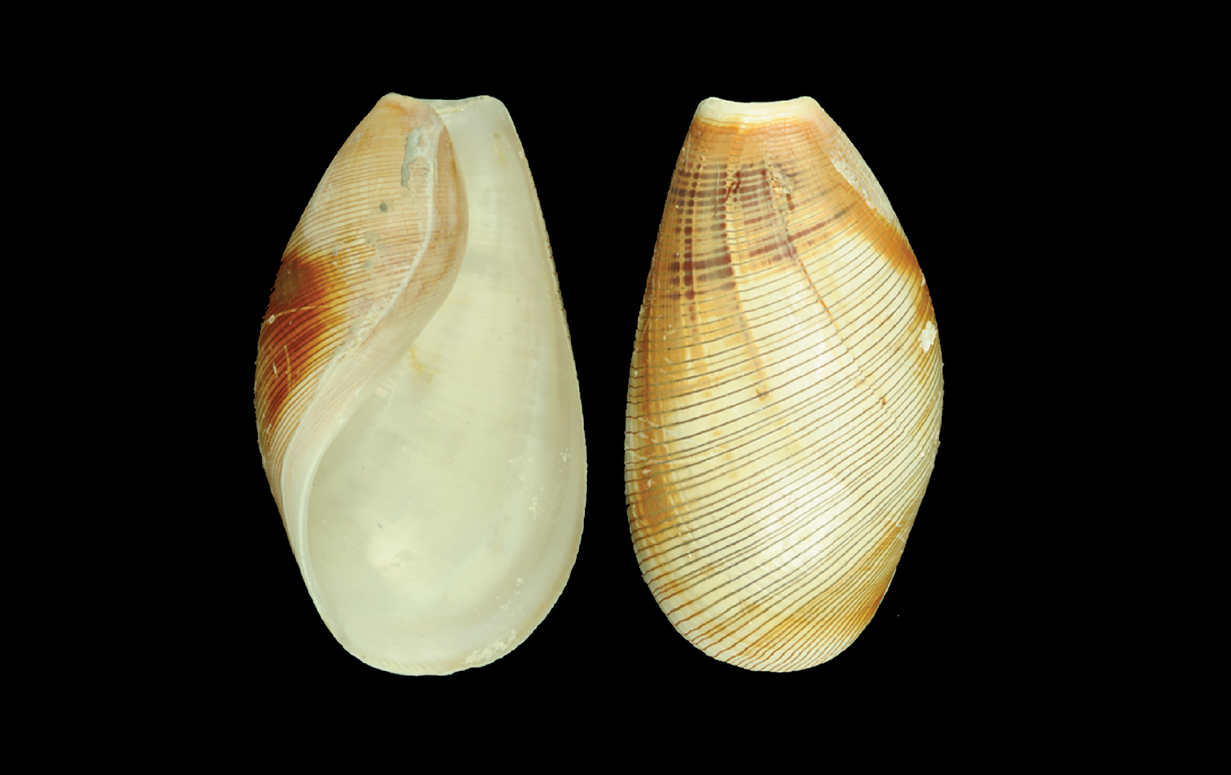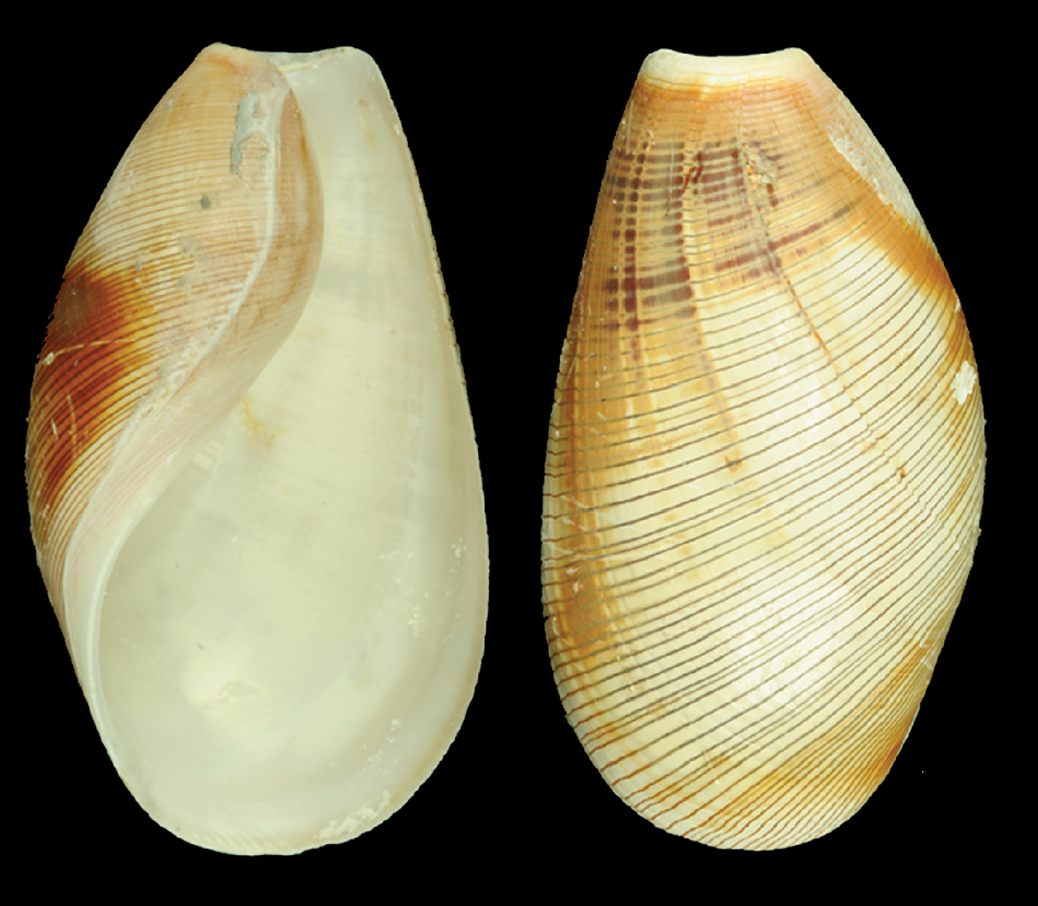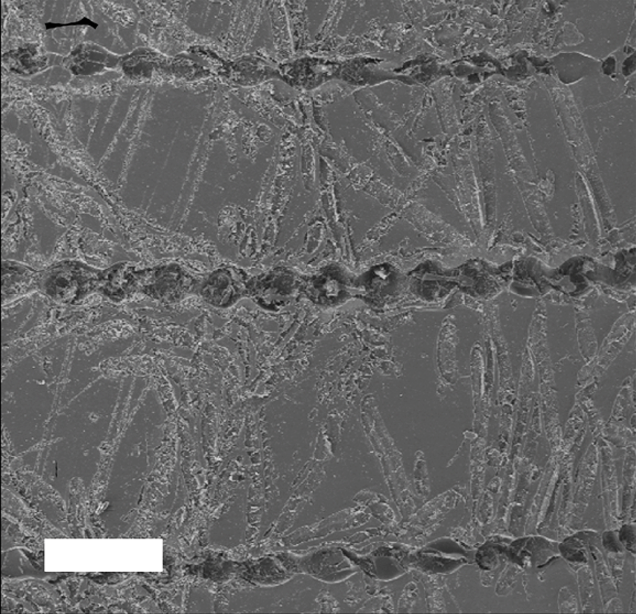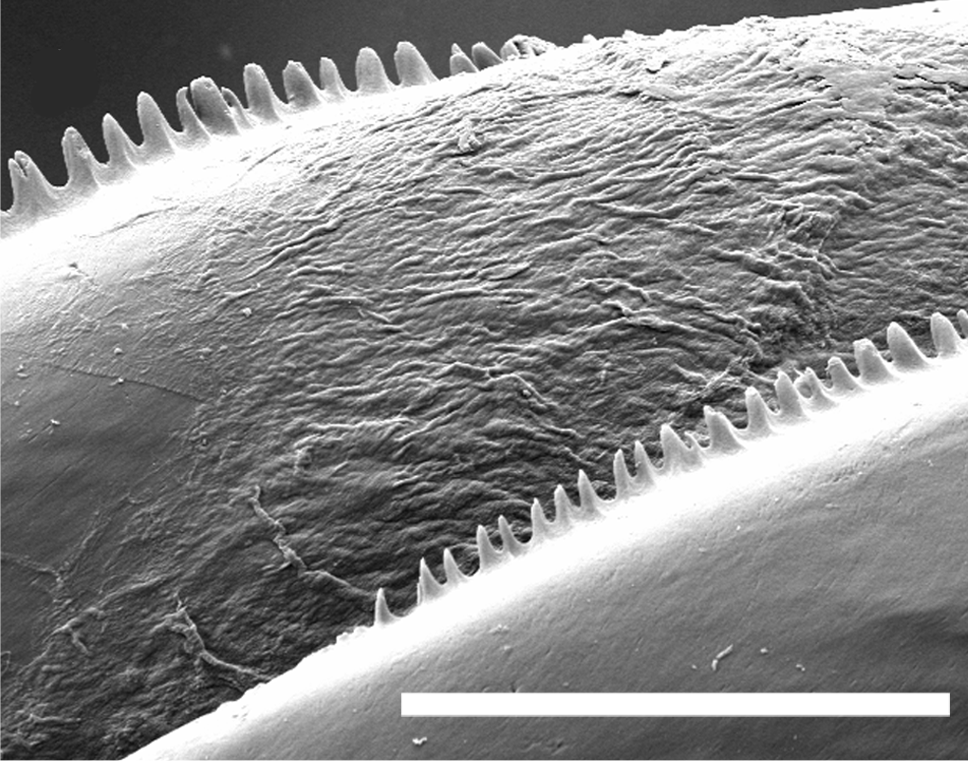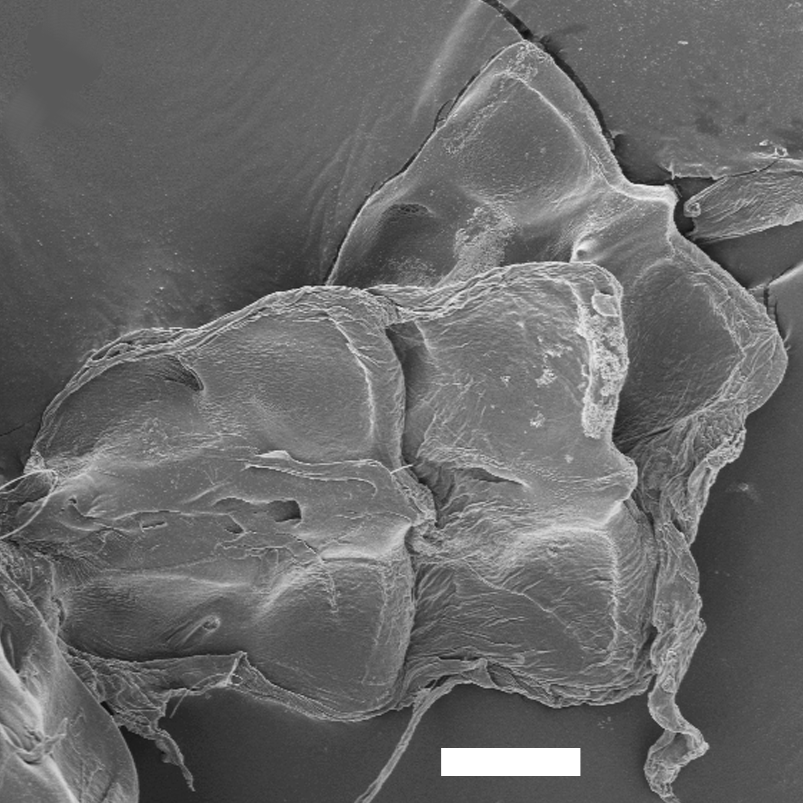Scaphander lignarius
Shell description
The thick, solid shell is external, usually with a pear-like shape when viewed from above. The thin outer layer of the shell (periostracum) is often visible and brown to whitish in colour; the shell is white under this layer. The opening is wide, and the upper edge is rounded and mostly does not extend beyond the top of the shell (apex). The shell has a pattern consisting of spiral lines of round punctuations that are connected and large growth lines. The size of the shell varies between 3.6–70 mm.
Animal description
The body is white, yellow or brown in colour. The head shield is broad, and there are side extensions of the foot (parapodial lobes) and an extension of the mantle under the snail (pallial lobe).
Anatomy
The radula consists of one inner lateral on each side and one central (rachidian) tooth. The lateral teeth are curved with a broad base and simple denticulation in one row. The denticles are found on the outer edge and sometimes on the inner edge. The central tooth has three lobes in the front, two rounded lobes on the sides and one pointed in the middle. The central tooth has a square base. The gizzard holds three unequally sized plates. The paired plates range in shape form triangular to having three rounded lobes, the unpaired plate is much smaller and rounded. The central field of the gizzard plates is often yellowish and thicker than the sides of the plate. The salivary glands are short and uneven. The male reproductive system consists of a cylindrical penis chamber and a cylindrical prostate, which is rounded in the top and narrows towards the penis chamber. The penis chamber does not hold a penis (penial papilla), however the inner walls of the chamber are covered in soft warts. The prostate is filled with a spongy tissue.
Ecology
Occurs in depths between 70–630 m.This species feeds on foraminiferans, bivalves, gastropods, scaphopods and occasionally sipunculids. This species is known to produce some substances (secondary metabolites) that probably functions as alarm pheromones.
Geographical distribution
Occurs in the East Atlantic; from Finnmark, Norway to the British Isles, Europe, the Mediterranean Sea, the Canary Islands and Madeira.
References
Eilertsen ME og Malaquias MAE (2013). Systematic revision of the genus Scaphander (Gastropoda, Cephalaspidea) in the Atlantic Ocean with a molecular phylogenetic hypothesis. Zoological Journal of the Linnean Society 167(3): 389-429. http://onlinelibrary.wiley.com/doi/10.1111/zoj.12013/abstract. DOI: 10.1111/zoj.12013.
